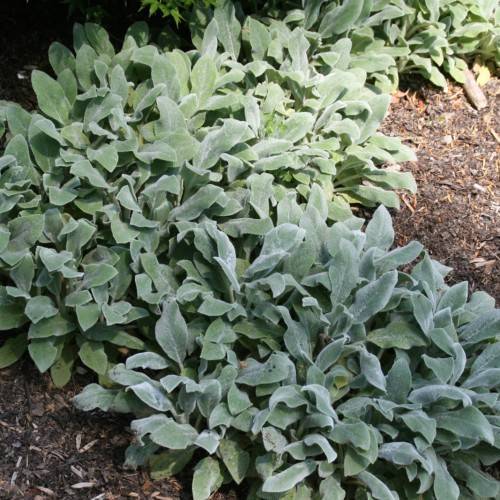
lambs' ears
Stachys byzantina 'Silky Fleece'
Cycle:
Herbaceous Perennial
Watering:
Minimum
Hardiness Zone:
5 - 8
Flowers:
Flowers
Sun:
Full sun
Leaf:
Yes
Growth Rate:
Low
Maintenance:
Low
Drought Tolerant:
Yes
Salt Tolerant:
Yes
Care Level:
Medium
watering
Lambs' ears should be watered when the top 1-2 inches of soil become dry. Depending on the season and indoor or outdoor environment, watering should take place every 5-7 days in the summer, and every 7-10 days in cooler months. When watering, be sure to thoroughly moisten the soil; water should reach the roots but not leave standing water or pools of excess water on the surface. Once established, this plant is quite drought tolerant; in the summer, it may not need to be watered at all in some climates.
sunlight
Lambs' ears (Stachys byzantina 'Silky Fleece') should generally be grown in full sunlight for best results. They should receive at least 6 to 8 hours of direct sunlight every day, with 8 hours being ideal. They do well in morning sun and afternoon shade or bright, indirect light throughout the day. Direct sunlight should be avoided in the hottest part of the day to help prevent stress and wilting.
pruning
Lambs' ears (Stachys byzantina 'Silky Fleece') should be pruned in late winter or early spring, before the plant begins putting out new growth. Remove any damaged, dead, or sickly stems, cutting them off at the base as close to the soil level as possible. Additionally, you should trim the stems back by 1-third to 1-half of their total length. This will encourage the plant to branch out and fill in more densely. Keep in mind that pruning should only be done sparingly; too much pruning can stimulate excessive plant growth and reduce the overall density of the plant.
